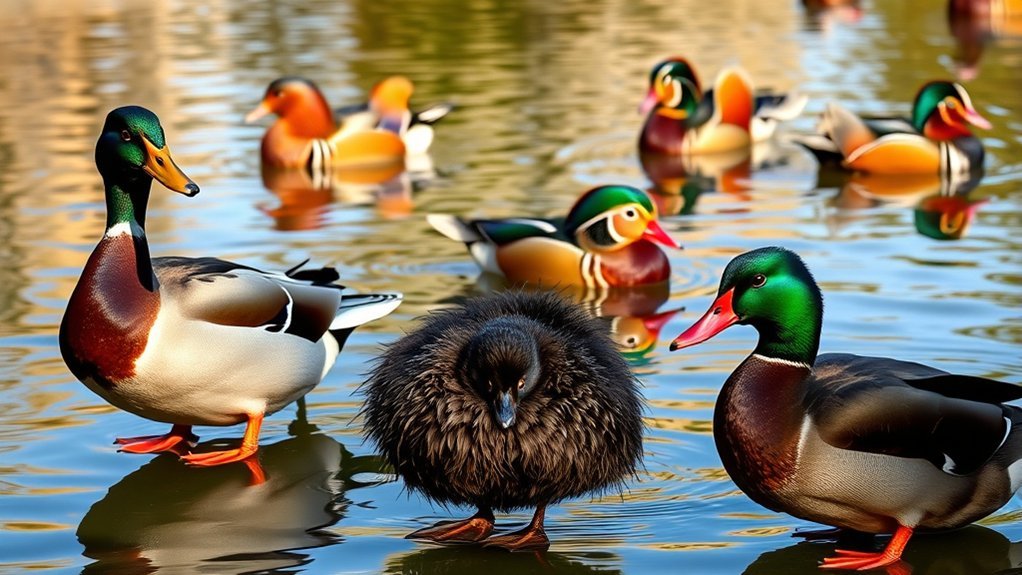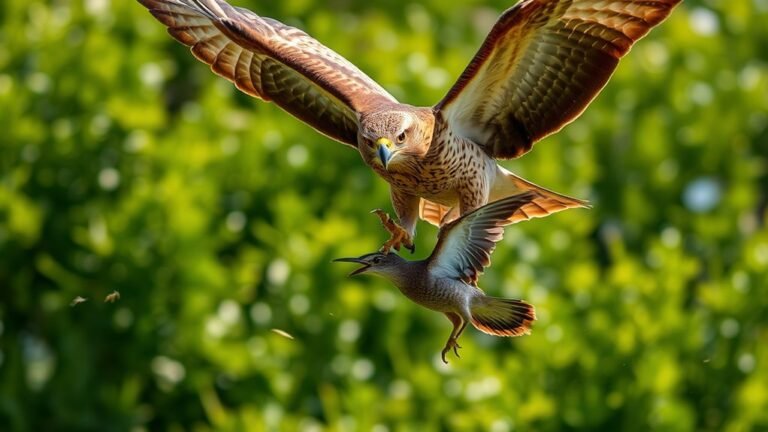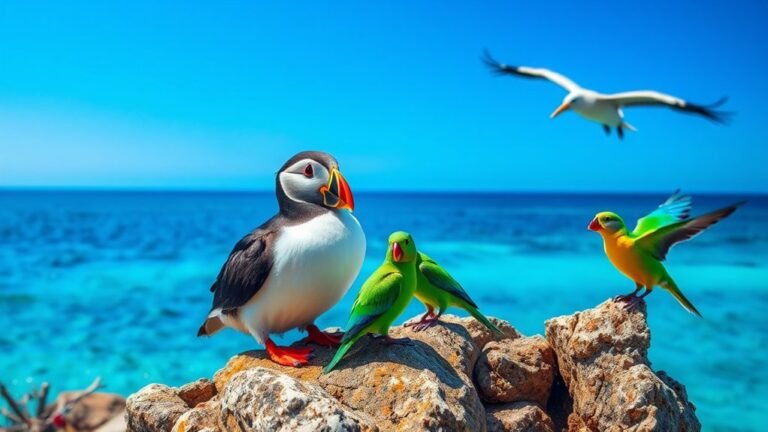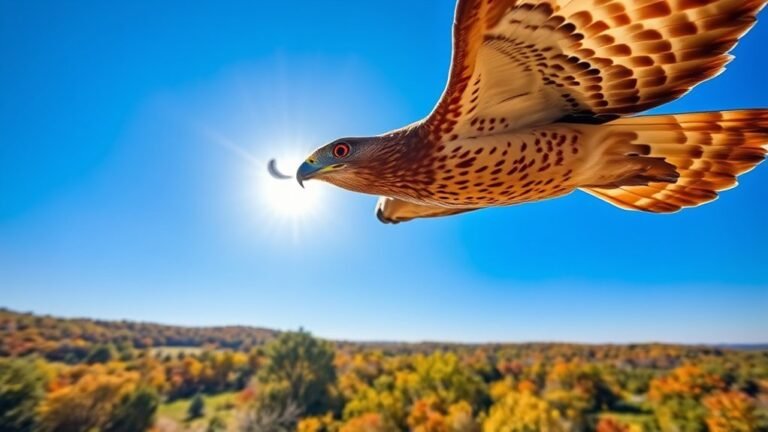Exploring Ducks: Types and Characteristics
Ducks come in many types, and each type is really interesting. They have different behaviors that help them live in their environments. For example, some ducks like to dive underwater to find food, while others prefer to eat from the surface of the water.
These ducks show unique traits that help them survive. The way they behave can tell us a lot about where they live and how they find food. Learning about these differences makes it more fun to understand ducks better. What else might these traits teach us about how they stay safe and thrive?
A Quick Overview
Diving ducks are great swimmers. They have strong legs that let them dive deep into the water. Their bright feathers help them attract mates.
Dabbling ducks feed at the water's surface. They tilt their bodies to reach plants and insects, making it easy for them to eat.
Perching ducks like to build their nests high in trees or shrubs. This keeps them safe from predators and helps keep nature healthy.
Domestic ducks come in many colors and patterns. They are known for being friendly and playful, which makes them fun to have around.
Conserving wild ducks is very important. We need to protect their habitats, restore wetlands, and raise awareness about their needs.
The Colorful World of Diving Ducks

When people think of ducks, they often picture them waddling around ponds. But diving ducks are different! They explore the water underneath the surface. These ducks have special skills that help them find food underwater. Their bodies are shaped to swim quickly, and their strong legs let them dive deep.
As you watch these amazing ducks, you'll see their colorful feathers. Each type of diving duck has its own bright colors. For example, the male Common Goldeneye has shiny colors, while the female Canvasback displays interesting patterns.
These beautiful feathers help them attract mates and form social bonds. Diving ducks show how nature combines beauty with survival. They thrive in their underwater playground, showcasing the wonder of life beneath the water.
Dabbling Ducks and Their Feeding Habits
Dabbling ducks are fun birds that like to eat close to the water. Unlike diving ducks that go underwater to find food, dabbling ducks stay at the surface. You can see them tilt forward, sticking their tails up in the air to reach plants and insects just below the water. This way of eating makes it easier for them to find food without diving down.
Dabbling ducks have a tasty diet. They eat seeds, water plants, and small bugs. You can find them in many places, like wetlands and parks.
They're good at living in different environments, which helps keep nature healthy.
By learning about how dabbling ducks eat, you can enjoy watching these charming birds even more. They're a big part of the places they live.
The Elegance of Perching Ducks
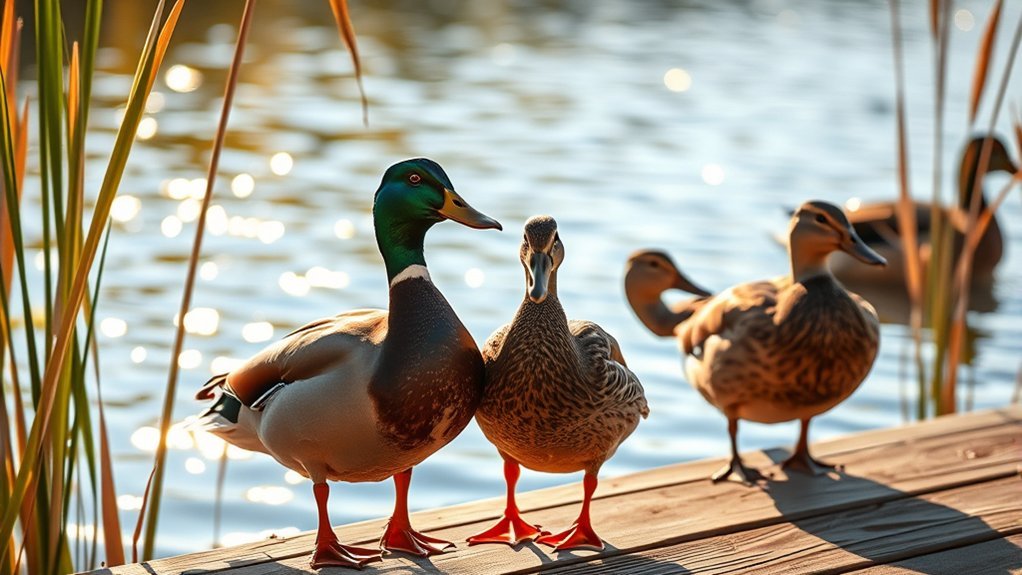
Let's talk about perching ducks! These ducks are really interesting because they can easily sit on branches and other high places. This helps them stay safe from predators.
When perching ducks build their nests, they pick hidden spots, usually in trees or thick bushes. This keeps their babies safe.
Watching them move around their home is amazing. They're both graceful and clever.
Learning about perching ducks helps us connect with nature. It reminds us how important these beautiful ducks are in our ecosystems.
Don't you think they're incredible creatures?
Unique Attributes of Domestic Ducks
When you look at domestic ducks, you'll see many things that make them special. Unlike wild ducks, domestic ducks come in many colors and patterns. This is because people have carefully chosen which ducks to breed over time.
Domestic ducks are friendly and enjoy being around people and other animals. They usually have calm personalities, which makes them easy to handle. Their sounds are different too. They make distinct quacks, unlike the quiet noises of wild ducks.
These unique traits make domestic ducks great companions. They're charming and fun to be around, and you'll find joy in their playful nature. If you get a chance to spend time with them, you'll see why they're so loved.
Conservation and Habitat Protection for Ducks

Domestic ducks show us how important their wild relatives are for nature. Ducks help keep ecosystems healthy, and we need to protect their homes to ensure they survive.
Here's how you can help:
- Support Wetland Restoration: Get involved with projects that rebuild wetlands. These places are essential for ducks to nest and feed.
- Join Clean-up Events: Help local groups clean rivers and lakes. These waters are important habitats for ducks.
- Promote Safe Farming: Talk about farming methods that use fewer chemicals. This helps keep ducks and their homes safe.
- Teach Others: Share what you know about the importance of ducks. This can inspire your community to care about protecting them.
Your efforts can make a big difference. Every little action helps keep duck habitats safe and supports our environment.
Frequently Asked Questions
How Do Ducks Communicate With Each Other?
Ducks talk to each other in two main ways: by quacking and using their bodies. When ducks quack, they signal how close they are to one another and share their feelings.
For example, a loud quack can mean a duck is excited or wants to get attention. On the other hand, body language shows if a duck feels strong or weak. A duck standing tall might show it is feeling brave, while a duck that's low to the ground could be feeling shy or scared.
What Is the Average Lifespan of a Duck?
A duck usually lives between 5 and 10 years. This lifespan can change based on the duck's type, where it lives, and how well it's taken care of. Ducks that have good homes and feel safe often live longer. Good living conditions help them stay healthy and happy.
Do Ducks Migrate, and if So, How Far?
Yes, ducks do migrate. They travel each year to find warmer places and food. Some ducks fly a short distance, while others can go really far—sometimes hundreds or even thousands of miles! How far they fly depends on the type of duck and the weather. Each species has its own travel route and distance. Ducks follow their own paths to stay safe and find the best spots to live during different seasons.
What Are Common Predators of Ducks?
Ducks have to watch out for predators like foxes and hawks. These animals can be dangerous to ducks, especially when they try to find food or build nests.
As the seasons change, ducks change their behaviors, too. They often use tricks to stay safe. For example, they blend in with their surroundings to hide from danger. They also stick together in groups, which helps them look out for each other.
Watching ducks use these strategies can make you appreciate how smart they are. They're tough animals that know how to protect themselves in the wild.
How Can I Tell Male and Female Ducks Apart?
To tell male and female ducks apart, look at their colors. Male ducks often have bright colors and unique patterns on their feathers. In contrast, female ducks usually have more muted, plain colors. This difference in color makes it easier to spot which is which in different duck species. Next time you see ducks, check out their feathers!

Luna is the passionate founder and author of Birds and You, a website dedicated to sharing her love for birds with fellow enthusiasts. Through her engaging articles and guides, she aims to educate and inspire others to explore the fascinating world of birds. When she’s not writing, you can find Luna observing birds in their natural habitats or sharing beautiful bird photography on Pinterest. Join her on this journey to celebrate and protect our feathered friends!

